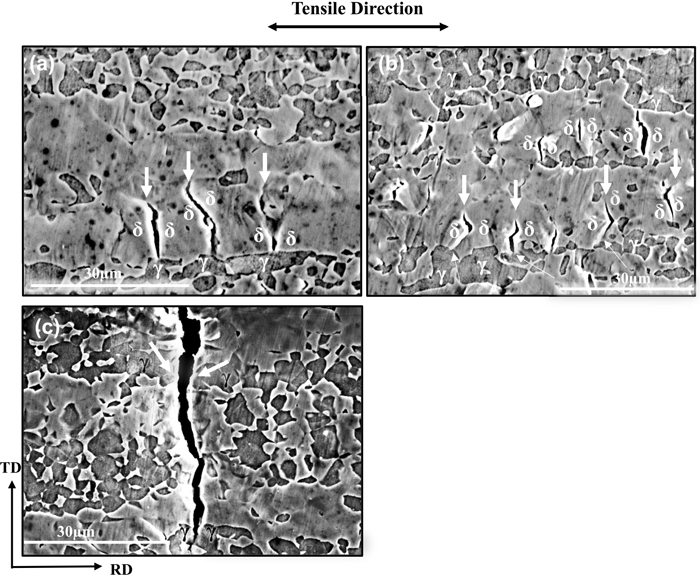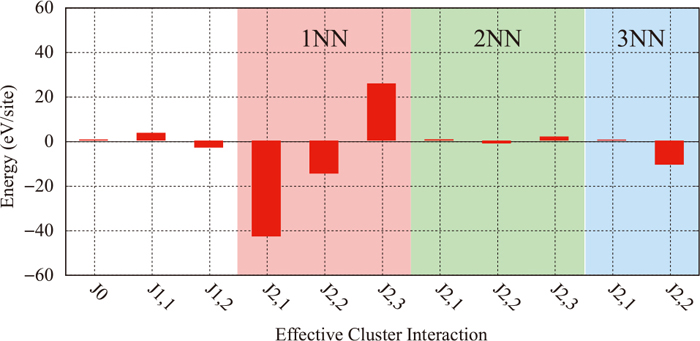59 巻, 12 号
選択された号の論文の29件中1~29を表示しています
- |<
- <
- 1
- >
- >|
Publication Data
-
2019 年 59 巻 12 号 p. Cover-
発行日: 2019/12/15
公開日: 2019/12/18
PDF形式でダウンロード (431K) -
2019 年 59 巻 12 号 p. Editorial-
発行日: 2019/12/15
公開日: 2019/12/18
PDF形式でダウンロード (595K) -
2019 年 59 巻 12 号 p. Contents-
発行日: 2019/12/15
公開日: 2019/12/18
PDF形式でダウンロード (523K)
Review Article
Forming Processing and Thermomechanical Treatment
-
原稿種別: Review
2019 年 59 巻 12 号 p. 2131-2141
発行日: 2019/12/15
公開日: 2019/12/18
PDF形式でダウンロード (2976K) HTML形式で全画面表示
Regular Articles
Fundamentals of High Temperature Processes
-
原稿種別: Regular Article
2019 年 59 巻 12 号 p. 2142-2148
発行日: 2019/12/15
公開日: 2019/12/18
PDF形式でダウンロード (1110K) HTML形式で全画面表示
Ironmaking
-
原稿種別: Regular Article
2019 年 59 巻 12 号 p. 2149-2155
発行日: 2019/12/15
公開日: 2019/12/18
PDF形式でダウンロード (1536K) HTML形式で全画面表示 -
原稿種別: Regular Article
2019 年 59 巻 12 号 p. 2156-2164
発行日: 2019/12/15
公開日: 2019/12/18
PDF形式でダウンロード (1528K) HTML形式で全画面表示 -
原稿種別: Regular Article
2019 年 59 巻 12 号 p. 2165-2173
発行日: 2019/12/15
公開日: 2019/12/18
PDF形式でダウンロード (2321K) HTML形式で全画面表示 -
原稿種別: Regular Article
2019 年 59 巻 12 号 p. 2174-2181
発行日: 2019/12/15
公開日: 2019/12/18
[早期公開] 公開日: 2019/09/06PDF形式でダウンロード (2248K) HTML形式で全画面表示 -
原稿種別: Regular Article
2019 年 59 巻 12 号 p. 2182-2192
発行日: 2019/12/15
公開日: 2019/12/18
[早期公開] 公開日: 2019/08/30PDF形式でダウンロード (3729K) HTML形式で全画面表示 -
原稿種別: Regular Article
2019 年 59 巻 12 号 p. 2193-2204
発行日: 2019/12/15
公開日: 2019/12/18
[早期公開] 公開日: 2019/08/28PDF形式でダウンロード (1178K) HTML形式で全画面表示 -
原稿種別: Regular Article
2019 年 59 巻 12 号 p. 2205-2211
発行日: 2019/12/15
公開日: 2019/12/18
[早期公開] 公開日: 2019/08/28PDF形式でダウンロード (1703K) HTML形式で全画面表示 -
原稿種別: Regular Article
2019 年 59 巻 12 号 p. 2212-2219
発行日: 2019/12/15
公開日: 2019/12/18
PDF形式でダウンロード (1066K) HTML形式で全画面表示
Steelmaking
-
原稿種別: Regular Article
2019 年 59 巻 12 号 p. 2220-2227
発行日: 2019/12/15
公開日: 2019/12/18
PDF形式でダウンロード (602K) HTML形式で全画面表示 -
原稿種別: Regular Article
2019 年 59 巻 12 号 p. 2228-2238
発行日: 2019/12/15
公開日: 2019/12/18
[早期公開] 公開日: 2019/08/28PDF形式でダウンロード (2052K) HTML形式で全画面表示
Casting and Solidification
-
原稿種別: Regular Article
2019 年 59 巻 12 号 p. 2239-2246
発行日: 2019/12/15
公開日: 2019/12/18
PDF形式でダウンロード (1783K) HTML形式で全画面表示 -
原稿種別: Regular Article
2019 年 59 巻 12 号 p. 2247-2255
発行日: 2019/12/15
公開日: 2019/12/18
PDF形式でダウンロード (1951K) HTML形式で全画面表示 -
原稿種別: Regular Article
2019 年 59 巻 12 号 p. 2256-2263
発行日: 2019/12/15
公開日: 2019/12/18
PDF形式でダウンロード (1532K) HTML形式で全画面表示 -
原稿種別: Regular Article
2019 年 59 巻 12 号 p. 2264-2271
発行日: 2019/12/15
公開日: 2019/12/18
PDF形式でダウンロード (1768K) HTML形式で全画面表示
Chemical and Physical Analysis
-
原稿種別: Regular Article
2019 年 59 巻 12 号 p. 2272-2282
発行日: 2019/12/15
公開日: 2019/12/18
[早期公開] 公開日: 2019/08/28PDF形式でダウンロード (1519K) HTML形式で全画面表示
Forming Processing and Thermomechanical Treatment
-
原稿種別: Regular Article
2019 年 59 巻 12 号 p. 2283-2293
発行日: 2019/12/15
公開日: 2019/12/18
[早期公開] 公開日: 2019/08/28PDF形式でダウンロード (2687K) HTML形式で全画面表示
Surface Treatment and Corrosion
-
原稿種別: Regular Article
2019 年 59 巻 12 号 p. 2294-2301
発行日: 2019/12/15
公開日: 2019/12/18
[早期公開] 公開日: 2019/08/23PDF形式でダウンロード (1164K) HTML形式で全画面表示 -
原稿種別: Regular Article
2019 年 59 巻 12 号 p. 2302-2310
発行日: 2019/12/15
公開日: 2019/12/18
PDF形式でダウンロード (2201K) HTML形式で全画面表示
Transformations and Microstructures
-
原稿種別: Regular Article
2019 年 59 巻 12 号 p. 2311-2318
発行日: 2019/12/15
公開日: 2019/12/18
PDF形式でダウンロード (637K) HTML形式で全画面表示
Mechanical Properties
-
原稿種別: Regular Article
2019 年 59 巻 12 号 p. 2319-2326
発行日: 2019/12/15
公開日: 2019/12/18
PDF形式でダウンロード (4485K) HTML形式で全画面表示 -
原稿種別: Regular Article
2019 年 59 巻 12 号 p. 2327-2333
発行日: 2019/12/15
公開日: 2019/12/18
PDF形式でダウンロード (1703K) HTML形式で全画面表示 -
原稿種別: Regular Article
2019 年 59 巻 12 号 p. 2334-2342
発行日: 2019/12/15
公開日: 2019/12/18
PDF形式でダウンロード (1201K) HTML形式で全画面表示
Physical Properties
-
原稿種別: Regular Article
2019 年 59 巻 12 号 p. 2343-2351
発行日: 2019/12/15
公開日: 2019/12/18
[早期公開] 公開日: 2019/08/30PDF形式でダウンロード (534K) HTML形式で全画面表示
Social and Environmental Engineering
-
原稿種別: Regular Article
2019 年 59 巻 12 号 p. 2352-2358
発行日: 2019/12/15
公開日: 2019/12/18
[早期公開] 公開日: 2019/08/28PDF形式でダウンロード (1236K) HTML形式で全画面表示
- |<
- <
- 1
- >
- >|


 = –0.0785, up to 20 mass% Nb in nickel between nitrogen and niobium. In addition, the effects of alloying elements on the activity coefficient of nitrogen have been further investigated and the second order cross-interaction parameters between nitrogen and chromium or iron with niobium at 1873 K have been determined as
= –0.0785, up to 20 mass% Nb in nickel between nitrogen and niobium. In addition, the effects of alloying elements on the activity coefficient of nitrogen have been further investigated and the second order cross-interaction parameters between nitrogen and chromium or iron with niobium at 1873 K have been determined as  = 0.0256 and
= 0.0256 and  = 0.0115.
= 0.0115.


